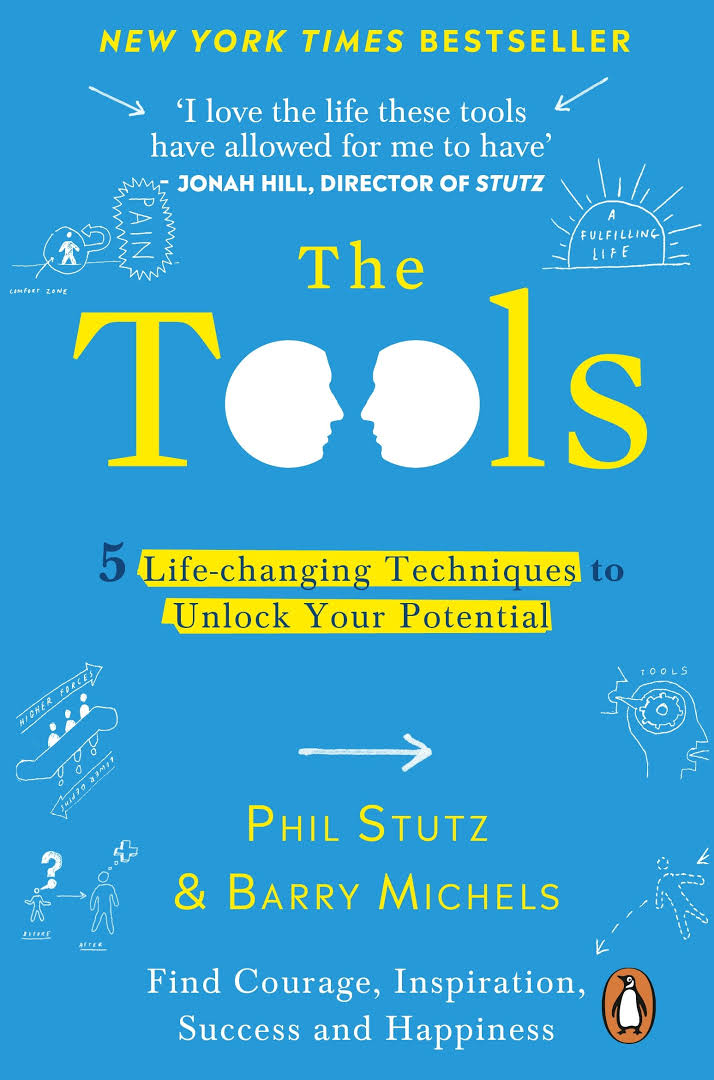The Tools Book Summary
“The Tools” by Phil Stutz is a book that delves deep into the human mind and offers practical tools to overcome challenges and lead a fulfilling life. With its straightforward language and actionable advice, this book resonates with readers seeking personal growth and transformation.
At its core, “The Tools” emphasizes recognizing and confronting inner obstacles that hinder personal progress. Stutz and co-author Barry Michels draw upon their experiences as therapists to introduce readers to powerful psychological tools that can be applied in everyday life.
The book is divided into five sections, each focusing on a tool to help individuals break free from self-limiting beliefs and behaviours. These tools include:
1. The Reversal of Desire: Stutz introduces the concept of embracing “negative visualization” to overcome fear and anxiety. By imagining and accepting the worst-case scenario, individuals can liberate themselves from the paralyzing grip of fear and move forward with clarity and purpose.
2. Active Love: The authors explore the transformative power of love and compassion in this section. They advocate for an active approach to love, emphasizing the importance of reaching out to others and connecting on a deeper level. Through acts of kindness and empathy, individuals can cultivate meaningful relationships and find fulfillment in serving others.
3. Inner Authority: Stutz encourages readers to tap into their inner strength and intuition to navigate life’s challenges with confidence and conviction. By acknowledging and embracing their innate wisdom, individuals can overcome self-doubt and insecurity, paving the way for personal growth and self-empowerment.
4. The Grateful Flow: Gratitude emerges as a central theme in this section, as Stutz highlights its transformative effects on mental well-being and overall outlook on life. By cultivating a mindset of gratitude and appreciation, individuals can shift their focus from scarcity to abundance, fostering a sense of contentment and fulfillment.
5. The Jeopardy Tool: The final tool introduced in the book encourages readers to confront their deepest fears and insecurities head-on. By embracing vulnerability and stepping outside their comfort zones, individuals can unlock their full potential and live authentically.
Throughout the book, Stutz incorporates real-life anecdotes and examples to illustrate the practical application of each tool. From overcoming career setbacks to navigating relationship challenges, the tools presented in “The Tools” offer valuable insights into the human psyche and provide a roadmap for personal transformation.
One of the key takeaways from “The Tools” is the importance of taking ownership of one’s life and actively participating in self-discovery and growth. Instead of passively accepting circumstances or succumbing to negative thoughts and emotions, individuals are encouraged to take proactive steps toward creating the desired life.
Stutz’s writing style is accessible and engaging, making complex psychological concepts easy to understand and apply. Each chapter is structured clearly and concisely, allowing readers to absorb the material at their own pace and reflect on its relevance to their lives.
One of the most compelling aspects of “The Tools” is its emphasis on personal responsibility and agency. Rather than viewing themselves as victims of circumstance, readers are empowered to take control of their thoughts, emotions, and actions, thereby shaping their destiny.
In conclusion, “The Tools” by Phil Stutz is a must-read for anyone seeking practical guidance on overcoming obstacles and unlocking their full potential. Through its insightful teachings and actionable advice, this book is a valuable resource for personal growth and transformation. By incorporating the tools outlined in the book into their daily lives, readers can cultivate resilience, courage, and inner peace, ultimately leading to a more fulfilling and meaningful existence.
